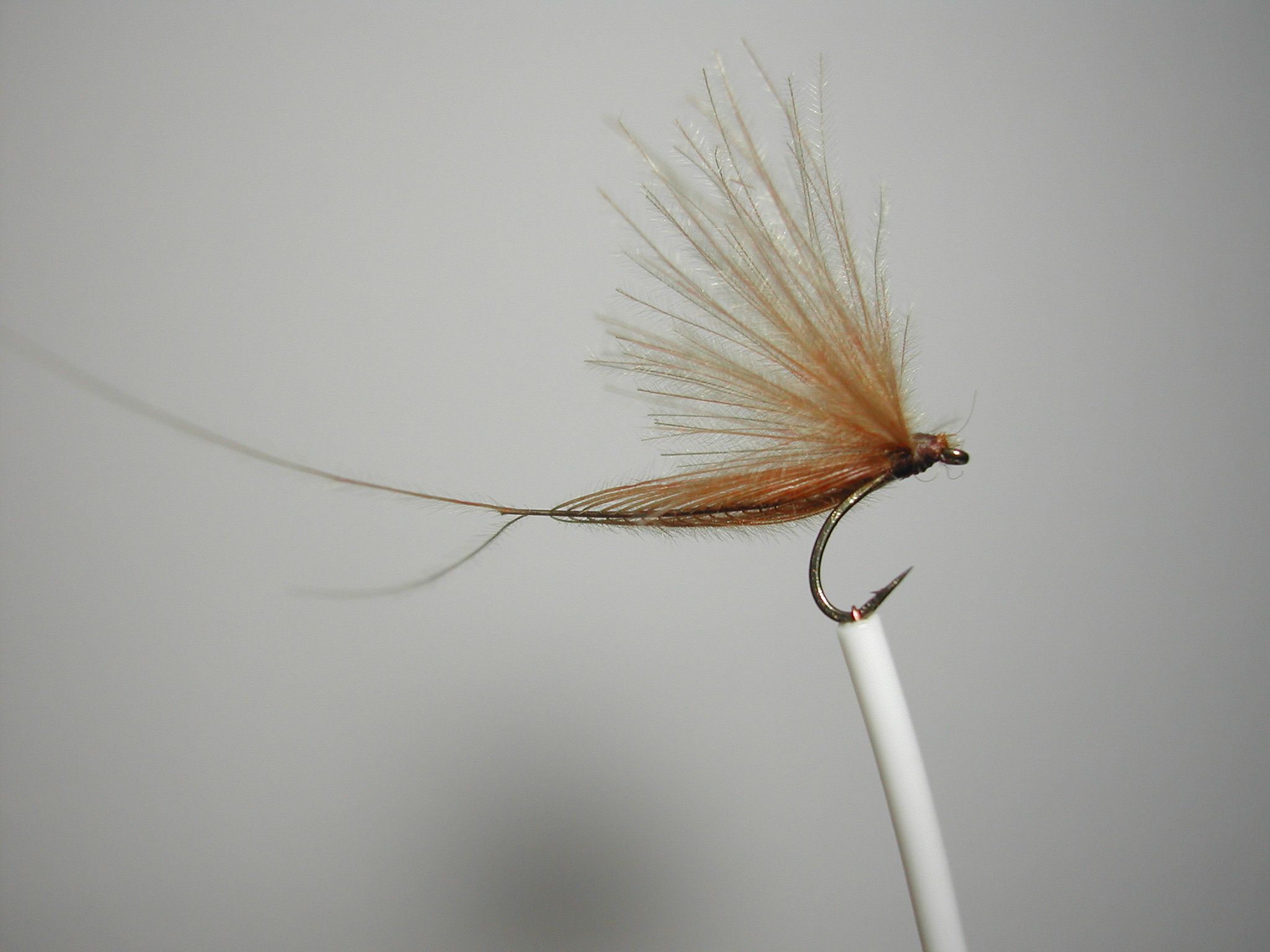The Mirage a mayfly imitation from world-renowned fly tyer Agostino Roncallo
(To read about Agostino see the chapter on him in Flytyers of the World Volume 1 by Steve Thornton)

The Mirage
One day I was fishing in a stream when I noticed a duck breast a feather resting on the surface with the convex side up going down with the current.
A slight breeze was making it do small movements in the foam and the feather slid lightly on the water so as to make it look like a living thing.
It conveyed a feeling of buoyancy that was so strong I believed that if I was able to create the appearance of a feather in a fly maybe I could have an extraordinary artificial.
. Back home, I took the bag where I kept the feathers of female mallard. I chose a feather and tried to shape it into a short-lived mayfly imitation.
The extended body I created with the system we use to make the Wonder Wing, but I could not get further with the construction of the fly.
For several years I used the Cul de Canard, with which I had already had made good imitations, but I thought by replacing it with duck feather, I could use its unique structural features for a better result.
In fact, a miracle happened: after building the system with the extended Wonder Wing body, I created the rest of imitation almost without realizing it.
I think that moment was so decisive for the final result of my years of experience as a tyer it nearly knocked me unconscious.
I tied the fly very quickly, so fast in fact I was amazed.
It is thin and diaphanous, but, in addition to these structural features, it has an ability to capture fish so effectively it made me think of the murderous French fighter aircraft, something you see in the shaded contours, which is why I decided to call it the Mirage.
Soon after, I realized that I had also discovered a new and original way to use the Cul de Canard.
II started with great determination to use and evolve the concept of construction of the Mirage and the evolutionary process that led me to create the pattern was include it in my book "Magic in CdC" published in 2004 by Edizioni Fly Line as a contribution of Italian Fly fishers. (See this book on the following linkhttp://www.gobages.com/comu/litterature-halieutique/livre_peche_mouche_87.html Tom Sutcliffe)

Mirage Bruna
Dressing
- I choose a CDC hackle with all the fibres intact.
- Holding the tip, I pull the barbs near the base of the hackle, what is the procedure to create the wonder wings, in order to obtain an extended body.
- Fixed the extended body near the eye of a hook grub.
- In order to obtain the wings turn back the fibres of the base along with those that exceed from the extended body, and, with few turns of thread wrapped in a figure of eight.
- Cut off the hackle that exceed over the eye of a hook and one that extended beyond the body leaving two beards to imitate the tails.
- I run the final node and the fly is finished.

I think I can say that the Mirage is more than a passing imitation and that it imitates the essence.
Because of its simplicity it may give the impression of being fragile but it is strong enough. Sure, it can ruin after a catch, but this is not a problem because it is tied in no time.
I tie the fly on grub hooks from size 16 to size 24. Do not use hooks smaller because the structure of the CDC hackle does not yield satisfactory tiny imitations.
As for use in fishing, it’s a fly to use for difficult fish, and is particularly suitable for fishing for grayling.
In the event that the fish refuse, before replacing the fly, try to thin the wings by ripping some fibres away. You will sometimes be able to catch a fish that moments before had refused.
Its effectiveness is well known. I have received confirmation of esteem and appreciation from many different European and non European countries.
See also http://www.rackelhanen.se/eng/10388.htm

Mirage Rossa
The tying steps

Testo Italiano originale:
Quando iniziai ad usarlo, mi accorsi che mi veniva spontaneo far seguire ad ogni mosca che costruivo, un'altra che rappresentava la sua evoluzione e da questa un'altra ancora, seguendo un processo logico così semplice da sembrare naturale.
Suggerisci una traduzione migliore


